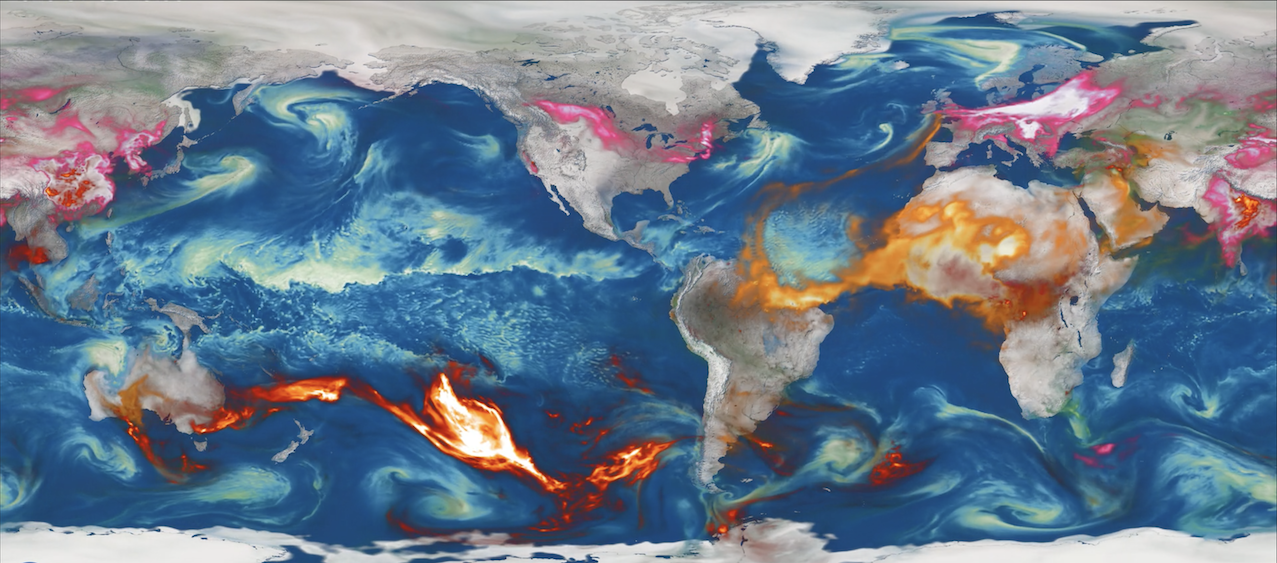In late 2019 and early 2020, massive wildfires in Australia destroyed more than a fifth of Australia's continental forests – consuming an area the size of Iceland – and killed hundreds of millions of animals. The blazes lofted smoke particles high into the atmosphere and across much of the South Pacific.
Those thick plumes of smoke might have had a far-reaching and long-lasting effect. A recent study based on computer models of Earth’s climate revealed that they could have prolonged the Pacific-wide La Niña that followed.
La Niña, a periodic cooling of tropical waters in the eastern Pacific, can affect regional and global weather patterns.
According to researchers, the excessive wildfire smoke from Australia might have blocked enough sunlight to enhance Pacific cooling. That, in turn, potentially could have shifted cold, tropical Pacific air masses to the north and altered sea-surface temperatures, thereby strengthening La Niña’s effects on global climate.
“As fires become bigger and more intense, the amount of emissions they put into the atmosphere increases – to the point where they can have similar effects as a volcanic eruption,” said John Fasullo, lead author of the study. “Fires have a global influence and, in some instances, can act as a feedback on the climate system – being influenced by climate, but also exerting an influence of their own.”
And because La Niña and its warmer-water counterpart, El Niño, can affect regional sea levels, a better understanding of wildfire influence could improve seasonal predictions of regional sea level changes.
The study was based on multiple runs of parallel climate model “ensembles.” One of the ensembles included the background average for global fire emissions, acting as the “control” set of modeling runs. The second included satellite data from the 2019-20 Australian wildfire emissions, plus the background climatology associated with fire emissions. Comparisons between the two modeling runs of their effects on clouds and aerosols – particles suspended in the atmosphere – revealed the possible climate influence from the Australian fires. The model used for both was Community Climate System Model, version 2, or CESM2.
While the powerful imprint of wildfires on La Niña shown in the modeling simulation leave some uncertainty about the real-world connection between the wildfires and sea surface temperatures in the equatorial Pacific, Fasullo said, such a clearly visible effect in the models could indicate a corresponding effect in nature.
“Careful modeling helps calibrate our understanding of natural processes,” said Ben Hamlington, a sea level researcher and leader of the NASA Sea Level Change Team. “This strong modeling result will point the way to further observations that could help confirm this effect and potentially improve modeling projections.”
El Niño and La Niña can affect weather patterns around the globe, and these effects can be intensified by human-driven climate change.
“El Niño and La Niña have this large seasonal footprint globally – floods in some regions, droughts in others,” said Fasullo, who is also part of the sea level team.
The regional patterns also “have a strong sea level effect – as much as a decade or two of average sea level rise,” he said. “We need to predict El Niño and La Niña to get regional sea level right.” Accounting for the effects of wildfire could sharpen scientists’ projections of future changes in the pattern.
“It may be beneficial to incorporate interactive land-model components to simulate wildfire in seasonal predictions of El Niño and La Niña,” Fasullo said. “Currently, none of the prediction systems actually do that. I think it’s something to explore further.”



